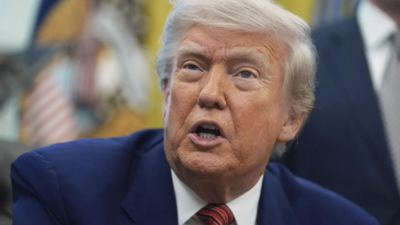US trade deficit narrows in February amid looming Trump’s tariff rollout

The US trade deficit narrowed in February, according to data released by the Commerce Department on Thursday, which was collected before President Donald Trump launched his latest round of global tariffs.
The trade gap shrank by 6.1% to $122.7 billion, slightly exceeding analysts’ expectations, according to news agency AFP.
In February, Trump introduced, then paused, sharp tariffs on Canada and Mexico, while also imposing additional duties on China. Since then, he has rolled out hefty levies on sectors such as steel, aluminium, and autos, with a global 10% tariff set to hit US trading partners in early April. Some countries and trading blocs will face even higher rates in the future.
These tariffs are expected to have a significant impact on US trade, as businesses adjust supply chains and try to mitigate rising costs. “Front-loading of imports remained in full effect in February,” noted Matthew Martin, senior US economist at Oxford Economics, referring to businesses rushing to stock up ahead of anticipated tariff hikes.
The tariffs announced on Wednesday “will add uncertainty to the outlook,” Martin added, warning that businesses may struggle to adjust as the April 5 deadline looms for new tariffs. This could lead to a sharp decline in imports during the second quarter, while retaliatory tariffs from other countries will likely weigh on US exports.
In February, the trade deficit contracted as exports rose and imports remained nearly unchanged. Exports increased by $8.0 billion to $278.5 billion, driven by industrial supplies, nonmonetary gold, and autos. Meanwhile, imports edged down slightly to $401.1 billion, as declines in industrial supplies were not fully offset by increases in consumer goods.






